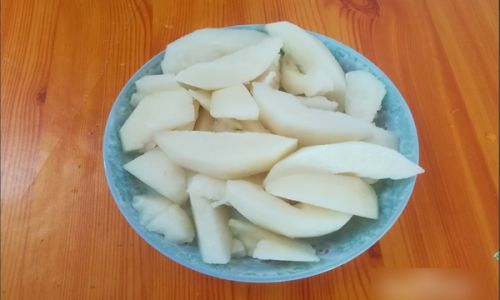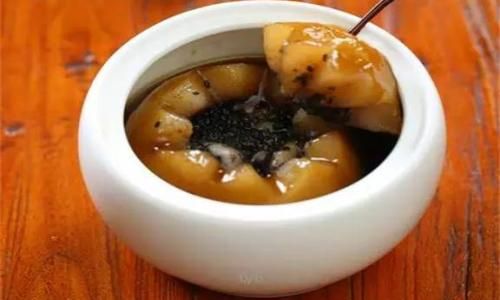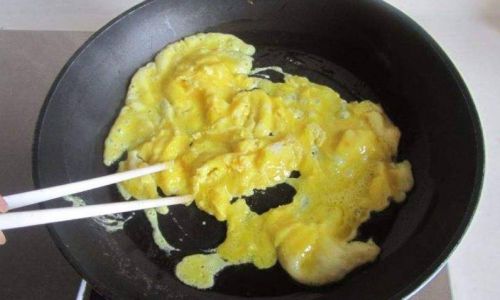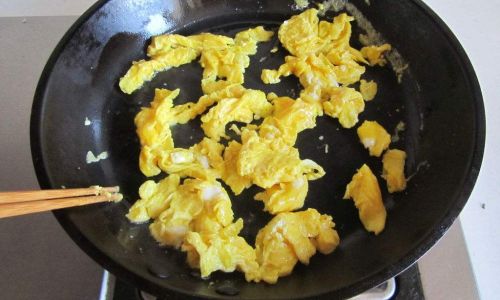Table of content
Introduction
Rock Sugar Pear Soup, a cherished traditional dessert in Chinese cuisine, is revered for its soothing qualities, delicate sweetness, and therapeutic benefits. At the heart of this dish lies a simple yet profound question: How long does it take to simmer rock sugar pear soup to achieve the ideal texture, flavor, and nutritional value? This article delves into the science, culture, and practical steps behind crafting this timeless recipe, with a focus on the critical role of simmering time. Whether you’re a novice cook or a seasoned home chef, understanding the nuances of timing will elevate your soup from ordinary to extraordinary.
The Cultural Significance of Rock Sugar Pear Soup
Before diving into culinary specifics, it’s essential to appreciate the cultural roots of this dish. Originating in China, rock sugar pear soup—known as bīng táng xuě lí (冰糖雪梨) in Mandarin—has been consumed for centuries as a remedy for coughs, sore throats, and dry skin, particularly during colder months. Pears, symbolizing purity and resilience in Chinese folklore, are paired with rock sugar, a natural sweetener believed to harmonize the body’s energies. Together, they form a harmonious blend of taste and tradition.
Health Benefits: More Than Just Comfort Food
Beyond its cultural significance, rock sugar pear soup offers a range of health benefits:
- Respiratory Relief: Pears contain compounds that soothe irritated throats and reduce inflammation.
- Hydration: The soup’s liquid base aids in maintaining bodily fluids, especially during dry seasons.
- Antioxidant-Rich: Rock sugar, though sweet, is less processed than refined sugar, retaining trace minerals like calcium and potassium.
- Digestive Support: The gelatinous texture from simmered pears may promote gut health.
To unlock these benefits fully, simmering time must be calibrated to preserve nutrients without compromising flavor.

Key Ingredients and Their Roles
- Pears: The star ingredient. Choose firm, aromatic varieties like Ya pear or Asian pear for their crisp texture and subtle floral notes.
- Rock Sugar (Bing Tang): A large, translucent crystal sugar that dissolves slowly, imparting a mellow sweetness.
- Water: Use filtered or spring water to avoid mineral aftertastes.
- Optional Additions:
- Dried Jujube: Enhances sweetness and adds iron.
- Goji Berries: Boosts antioxidant content.
- Ginger Slices: Adds warmth and aids digestion.
The Simmering Process: Step-by-Step
Preparation
- Peel the Pears: Remove the skin to eliminate bitterness, though some leave it on for added fiber.
- Core the Pears: Use a melon baller or knife to scoop out the seeds and tough central stem.
- Slice or Halve: For quicker cooking, slice pears into quarters; for a decorative touch, halve them and retain their shape.
Initial Boiling
- In a stainless steel or ceramic pot, combine pears, rock sugar, and water (enough to submerge the fruit by 2 inches).
- Bring to a rolling boil over high heat. This step activates the pears’ natural enzymes and begins breaking down cell walls.
The Simmering Phase
This is where timing becomes pivotal. Reduce heat to low and maintain a gentle simmer (tiny bubbles rising periodically).
-
Minimum Simmer Time: 30 minutes
At this stage, pears soften slightly but retain their shape. The soup remains light and refreshing, ideal for those who prefer a crisper texture. -
Optimal Simmer Time: 45–60 minutes
The pears become tender, almost translucent, and the soup thickens into a syrupy consistency. This duration balances flavor extraction and nutrient retention. -
Extended Simmer Time: 90+ minutes
Reserved for medicinal purposes, this method yields a deeply concentrated broth. Pears may disintegrate, creating a porridge-like texture.
Factors Influencing Simmering Time
-
Pear Variety:
- Soft Pears (e.g., Bartlett): Simmer 30–40 minutes.
- Firm Pears (e.g., Bosc): Require 50–60 minutes.
-
Pot Material:
- Thick-Bottomed Pots: Distribute heat evenly, reducing hotspots that could overcook parts of the soup.
- Clay Pots: Retain moisture but may extend cooking time by 10–15 minutes.
-
Altitude:
At high elevations, water boils at lower temperatures, necessitating a 5–10 minute increase in simmering time.
-
Desired Sweetness:
Rock sugar dissolves fully by 30 minutes, but allowing it to caramelize slightly during extended simmering enhances depth.
The Science of Simmering: Why Time Matters
Simmering is not merely about heating—it’s a controlled chemical reaction.
- Pectin Breakdown: Pears contain pectin, a soluble fiber that thickens the soup as it simmers. Prolonged cooking releases more pectin, creating a viscous texture.
- Sugar Caramelization: Rock sugar’s sucrose molecules undergo Maillard reactions at high temperatures, developing toasty, caramel-like flavors.
- Nutrient Preservation: Overcooking can degrade vitamin C in pears, but moderate simmering (45–60 minutes) retains most nutrients.
Troubleshooting Common Issues
-
Watery Soup:
- Cause: Insufficient simmering time or excess water.
- Fix: Remove lid during the last 10 minutes to evaporate excess liquid.
-
Burnt Base:
- Cause: High heat or unattended stove.
- Fix: Use a diffuser or switch to a double boiler for indirect heat.
-
Mushy Pears:
- Cause: Overcooking or overly ripe fruit.
- Fix: Add pears 20 minutes into simmering to preserve structure.
Regional Variations and Creative Twists
-
Cantonese-Style:
Add dried tangerine peel and wolfberries for a citrusy kick. -
Sichuan Influence:
Infuse with chrysanthemum flowers and honey for a floral twist.
-
Modern Adaptations:
- Spiced Version: Stir in cinnamon sticks or star anise.
- Dairy-Free Creaminess: Blend a portion of the soup with coconut milk post-simmering.
Serving Suggestions
- Hot: Ideal for cold nights or when nursing a cold.
- Chilled: Serve over ice as a summer refresher.
- Pairings: Accompany with almond cookies or osmanthus jelly for a complete dessert experience.
Storage and Reheating
- Refrigeration: Stores in an airtight container for up to 5 days. The flavor deepens over time.
- Freezing: Avoid freezing, as it alters texture.
- Reheating: Gently warm on the stove; microwave only if necessary, as it may cause uneven heating.
Frequently Asked Questions
Q: Can I use brown sugar instead of rock sugar?
A: While possible, brown sugar’s molasses notes will alter the flavor. Rock sugar’s neutral sweetness is preferred for authenticity.
Q: Is it safe to simmer the soup overnight?
A: No. Prolonged simmering beyond 2 hours risks nutrient loss and potential bacterial growth if cooled improperly.
Q: Can I reuse the pear slices after simmering?
A: Yes! Mash them into baby food, blend into smoothies, or use as a pie filling.
Q: Why does my soup taste bitter?
A: Overcooked pear skin or rock sugar impurities (e.g., sulfur from poor-quality sugar) may cause bitterness. Always use fresh ingredients.
Conclusion: The Alchemy of Time
Rock sugar pear soup is a testament to the marriage of patience and precision. The simmering time—whether 30 minutes or 90—dictates the soup’s character, transforming simple ingredients into a nectar that heals, comforts, and delights. By mastering the interplay of heat, texture, and timing, you honor a centuries-old tradition while crafting a dish uniquely your own. So, the next time you ask, “How long should I simmer this?” remember: the answer lies not just in minutes, but in the intention you pour into each bubble. 🍐✨





0 comments